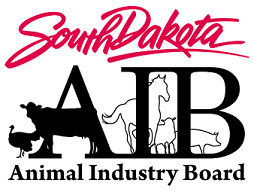Swine Health
US Swine Health Improvement Plan (US SHIP)
US SHIP is a USDA Veterinary Services sponsored pilot project being pursued with support of state and industry partners. US SHIP has received endorsements of support by the United States Animal Health Association, American Association of Veterinary Laboratory Diagnosticians, National Pork Board, National Pork Producers Council, and the North American Meat Institute.
The principal objectives are to develop and implement an African Swine Fever (ASF)-Classical Swine Fever (CSF) Monitored Certification Program modelled after the basic tenets of the National Poultry Improvement Plan (NPIP) H5/H7 Avian Influenza Monitored certification held by greater than 99% of US Commercial Poultry Operations.
The US SHIP ASF-CSF Monitored certification aims to mitigate risks of disease introduction and provide a practical means for demonstrating evidence of freedom of disease (outside of foreign animal disease control areas) in support of ongoing interstate commerce and a pathway towards the resumption of international trade over the course of a trade impacting disease response and recovery period.
US SHIP Program Standards:
- Informed by a congress of US pork industry participants
- Applicable across the broad spectrum of various types of pork production operations
- Center on Biosecurity, Traceability, and Sampling and Testing
US SHIP Certification:
- Certificates are held by producers and packers
- Intended for all types of pork producers i.e. large, small, exhibition/youth)
In total, US SHIP will establish a national program of technical standards and associated certification recognized across participating states that centers on disease prevention and demonstration of freedom of disease outside of control areas in support of animal health, commerce, and trade.
US SHIP is being developed in such manner that the experiences gained and operations established through the piolot build the foundation for a substainable and officially recognized platform for safeguarding, certifying and bettering the health of US swine and longer-term competitiveness of the US pork industry.
Official State Agency
The SD Animal Industry board is administering the US SHIP in South Dakota. Please contact Marc Hammrich, DVM, marc.hammrich@state.sd.us or 605.773.3321 for more information.
Enrollment
Please follow these steps to enroll:
https://usswinehealthimprovementplan.com/enrollment-requirements/
Porcine Epidemic Diarrhea Virus (PEDv)
PEDv is a viral disease from the family Coronaviridae. PEDv is not a zoonotic disease and is not a food safety concern. Clinical signs of the disease include severe diarrhea, vomiting, and death loss. The disease is most severe in young piglets, but can affect pigs of any age. Older pigs usually recover from the disease within 7-10 days. The virus is transmitted via the fecal-oral route. Contaminated clothing, boots, trucks, equipment, and other fomites have been implicated as vehicles for spreading the disease. Robust biosecurity measures are an important tool in preventing the spread of this disease.
PEDv was first recognized in the UK in 1971 and has spread through parts of Europe and Asia. It was first reported in the US on May 17, 2013 and quickly spread to 27 states within a year.
PEDv is a reportable disease in South Dakota and the SD AIB is currently monitoring the disease. Since PEDv can cause high mortality, up to 100% in young pigs, the disease drastically affects herd health and the producer’s profitability. As partners in protecting the health of pigs in South Dakota, the SD AIB continues to work with the South Dakota Pork Producers Council, pork producers, and veterinarians to address the disease.
Porcine Reproductive and Respiratory Syndrome (PRRS)
PRRS is a viral disease from the family Arteriviridae. The disease occurs in all age groups of swine. Reproductive deficiency or failure is seen in sows and gilts while infected boars will have poor semen quality. The respiratory syndrome is seen more often in young growing pigs but can also occur in finishing pigs and breeding stock. The virus is transmitted by direct contact and is found in nasal secretions, urine, semen, mammary secretions, and feces. As with any disease, biosecurity measures are helpful to prevent introduction and spread of the disease.
The clinical disease was first described in the US in 1987 in a few states. During the 1990’s PRRS spread through Europe and North America.
There has been much research focused on the PRRS virus in the last 20 years, which has contributed to the development of strategies to prevent and control the disease in all types of swine operations. PRRS continues to be of importance to the swine industry due to its effects on herd health and subsequent economic impact.
SD AIB PRRS Pamphlet


For Additional Information
Please Call 605.773.3321